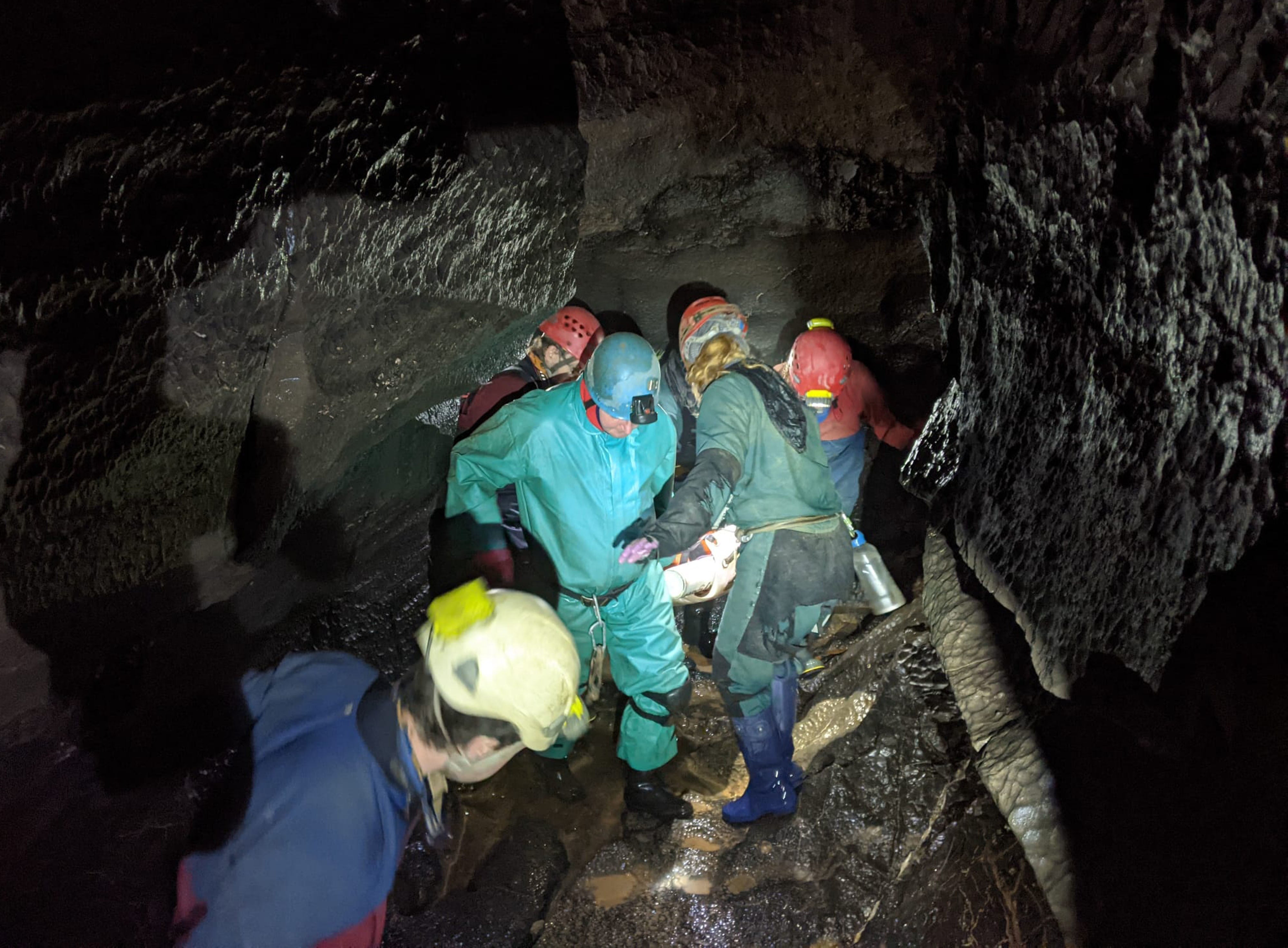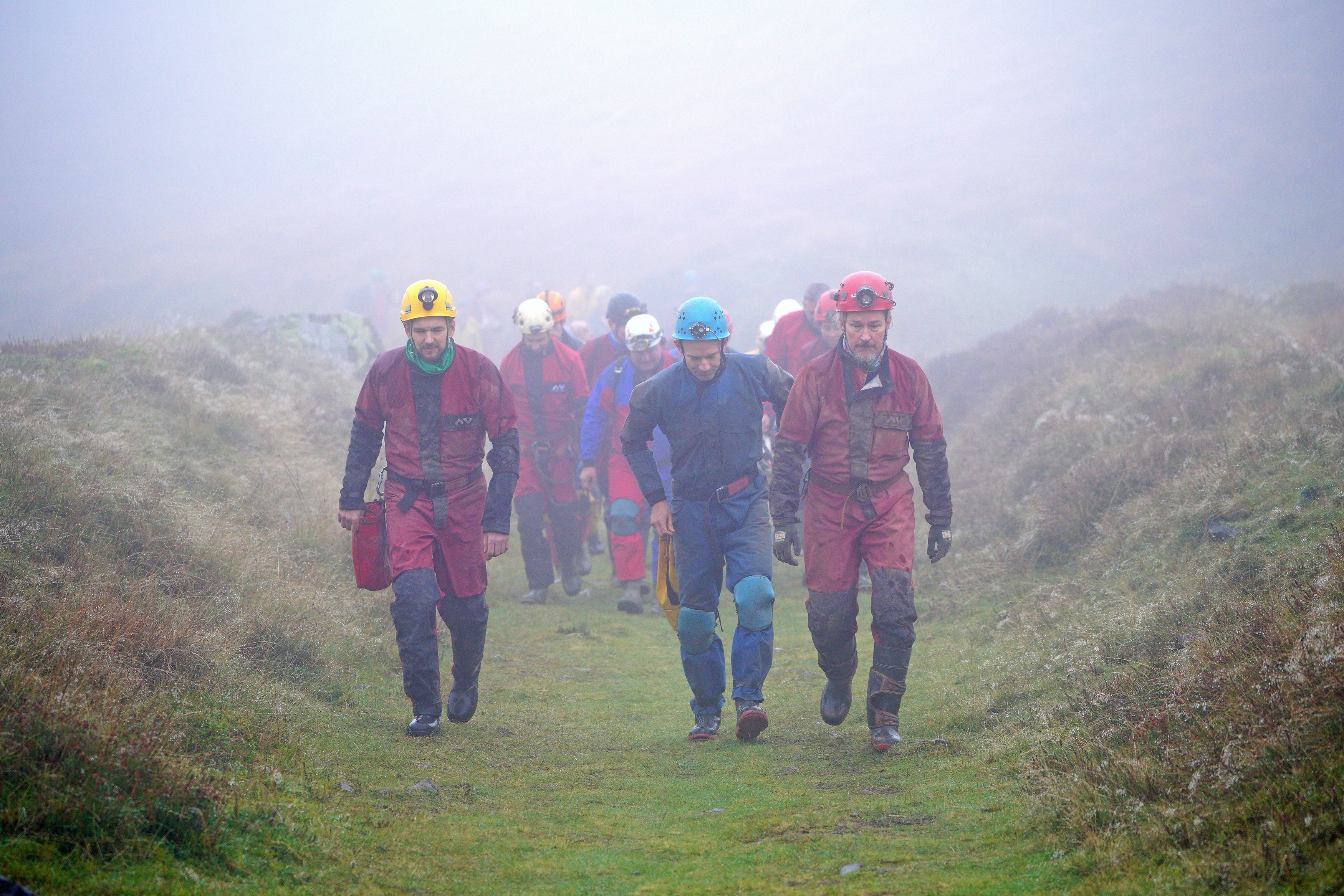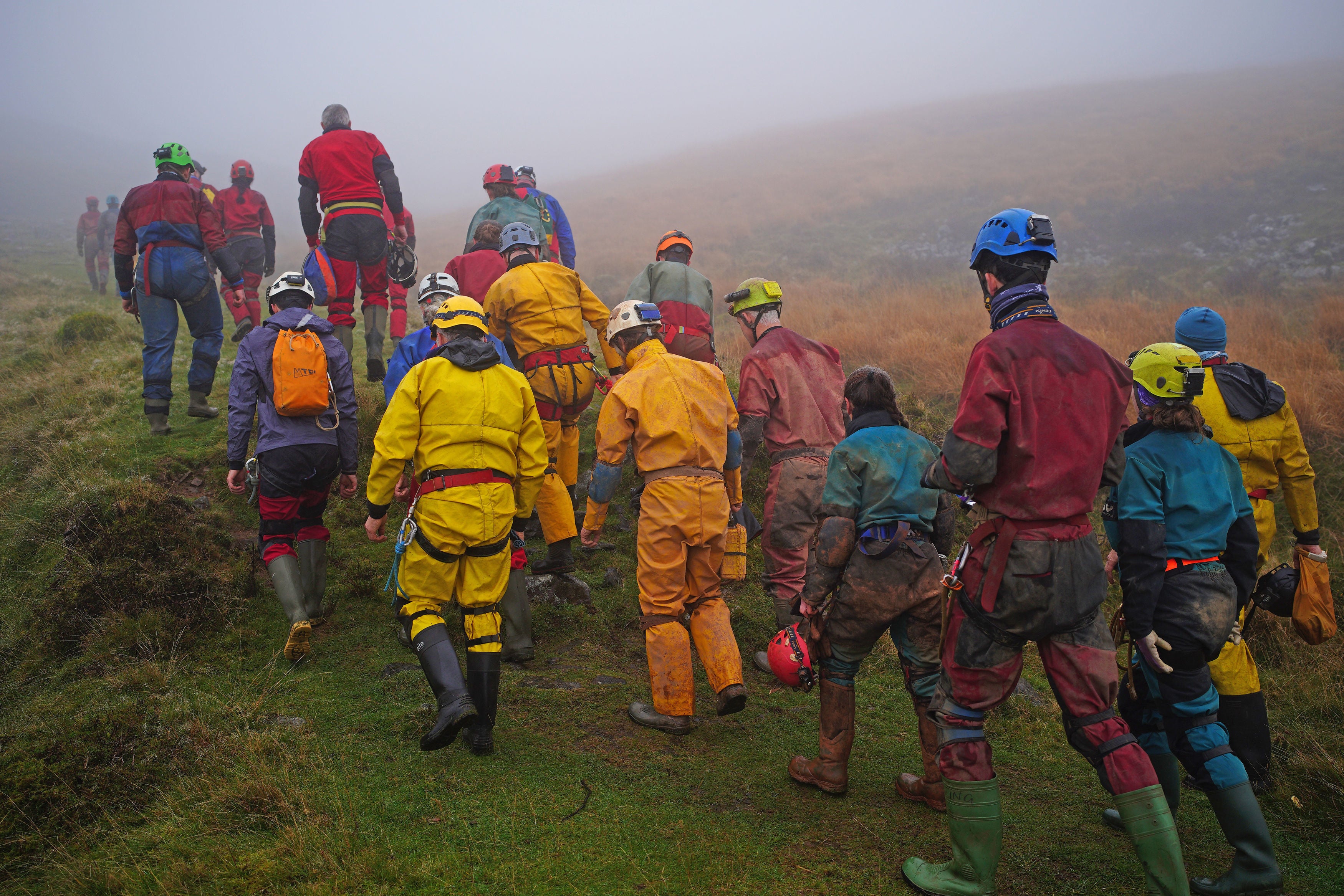Brecon Beacons cave rescue: Volunteers describe 54-hour mission to rescue man through ‘narrow rifts and waterfalls’
‘I think there was no question that people were just going to drop everything and come and help,’ rescuer tells Zoe Tidman


Volunteers have described navigating deep water, waterfalls and narrow passages as they carried an injured man to safety on a 54-hour cave rescue mission in Wales.
Around 300 people descended to Ogof Ffynnon Ddu in the Brecon Beacons to help rescue the man from the UK’s deepest and third-longest cave.
“Because it was such a long extraction, we were doing it in shifts,” Sarah Bergin, who took part in the rescue mission, tells The Independent.
The closest route out would not have been possible with a stretcher, she says, so rescuers decided to take a longer, more spacious way out.
But even so, it was no easy feat.
“The start of the rescue was a very awkward passage, and took a long time to move very short distances,” Allan Berry, a volunteer who drove down from Derbyshire to help with the rescue, tells The Independent.
“And then the middle section, even though the passages were bigger, had water in and therefore you’ve got to watch getting cold, all that kind of stuff.
“And then the last section, even though it’s all dry passage, has a lot of climbs and boulders to climb over and things which again, is easy when you just cave in, but very difficult with a stretcher.”
The injured man, who has been described as an experienced caver who was unlucky, was brought to safety on Monday.
Rescuers said they spent 54 hours “manoeuvring the injured caver through technically challenging terrain” to bring him to the surface.
Ms Bergin tells The Independent she helped in the middle section where the injured man was carried up the streamway.
“You’re dealing with the undulations and the meanders of the streamway itself, and then deep water in some places, and waterfalls and cascades and that kind of thing,” Ms Bergin, whose first rescue mission it was, tells The Independent.
“So it’s just trying to manoeuvre the stretcher such that you don’t dunk him in the water. And also just to try and minimise the pain and not get stuck onto the stretcher yourself.”
The 34-year-old research scientist, who had spent 11 hours caving nearby in Wales the day before, said it was a “smooth operation”.
There was a controller with every team – usually made up of around 12 people who would do 12-hour shifts underground – who would direct them as to the next step of the rescue operation, she says.

“Because we had buoyancy on the stretcher, we could float him along the river and then along the streamway,” the volunteer tells The Independent.
“And then other aspects because of the tightness of it, we would maybe lift him over our heads or pass him hand-over-hand in a kind of convoy line.”
Peter Dennis, a volunteer rescuer for South and Mid Wales Cave Rescue Team (SMWCRT), said he helped in multiple stages of the rescue - including the initial moving of the injured man.
“I was put in the party that was involved in moving the injured caver from the site of the accident through some quite narrow rifts, which means passageways which are tall, so lots of headroom, but rather narrow and awkward width-wise,” the university academic says.

Mr Dennis, who also chairs the British Cave Rescue Council, tells The Independent: “There's very little space anywhere in the cave to carry a stretcher in the traditional way.”
He adds: “You're either hauling it, dragging it, sliding it along the dry mud floor with ropes in front.”
Rescuers would have to line up and pass the stretcher along, then crawl underneath or go another way to reach the front again, he says.
“That actually is why it takes so long to get a stretcher, along some sections, because that process might be for several hours to get through more awkward narrower passageways.”
At one point, the cavers could not stand up in a narrow passageway and had to sit with their knees and backs pressed against the walls, while the stretcher was slid over their laps, he says.
Mr Berry, the chair of Derbyshire Care Rescue Organisation, says his shift in the streamway needed other tactics.

“Sometimes the water was over your head. I stepped in a pool at one point and it went over my head,” he says.
“So we had to float the stretcher across some sections like that. It meant the cave rescuers negotiating around the edges and trying to get round those pools, or swimming across them, or on quite a few occasions, we fell in them.”
At other points, the stretcher had to be taken up waterfalls and lifted vertically using ropes, he says.
SMWCRT – who co-ordinated the rescue mission – said the nature of the man’s injuries, as well as the deep underground location, resulted in the “longest stretcher carry in British cave rescue history”.
Gary Evans from SMWCRT said rescuers were “delighted” after the man was brought to safety on Monday.
“We’re delighted because it was a difficult rescue and because the casualty has done remarkably well given everything that happened,” he told the BBC.

The man’s injuries are said to be non-life threatening, but are believed to include a broken jaw, leg, and spinal injuries.
Mr Dennis tells The Independent the initial message alerting volunteers to the rescue operation gave the first sign there was “maybe something serious”.
Usually, there is not a detailed briefing until teams arrive on site, he says. But this message told them to bring their sleeping bag.
“That was quite an interesting sort of indicator that it might have been a more prolonged rescue, but no one would have believed that was going to be a record breaker in terms of time,” the University of Aberystwyth academic says.
He adds: “It actually came true that we definitely needed a sleeping bag. That was two nights spent, but they weren’t really nights, it was sort of breaks between shifts.”
Fellow volunteer Ms Bergin says: “Some people would do a shift, get a few hours sleep and then get ready to go again.”
The 34-year-old was already nearby, having been caving elsewhere in Wales on Saturday.
“I got out of the cave and stuck all my soggy kit in the car and thought I’m not caving tomorrow, I’ll just leave it in there,” she tells The Independent.
When she was called up to help the rescue effort on Sunday, this meant some of her kit was “a little bit soggy” at the start of her 12-hour shift.
But this soon didn’t matter, as she was stood in the streamway anyway, she adds.
While underground, teams would come to give rescuers and the injured caver food and kit that they needed, she says. Above ground, volunteers were also ready to provide soup, chilli and tea.
“It’s a lovely community. And I think there was no question that people were just going to drop everything and come and help,” she says.
Rescue teams had come from across the country, including her local Derbyshire club, to support the rescue efforts.
Mr Berry says: “Cave rescue is about being there for your fellow cavers so when something happens a long way away like Wales, you do find that everyone rallies round and drops everything and gets there.
“Because essentially if it happened to me, I would want people to come and get me.”
Join our commenting forum
Join thought-provoking conversations, follow other Independent readers and see their replies
Comments